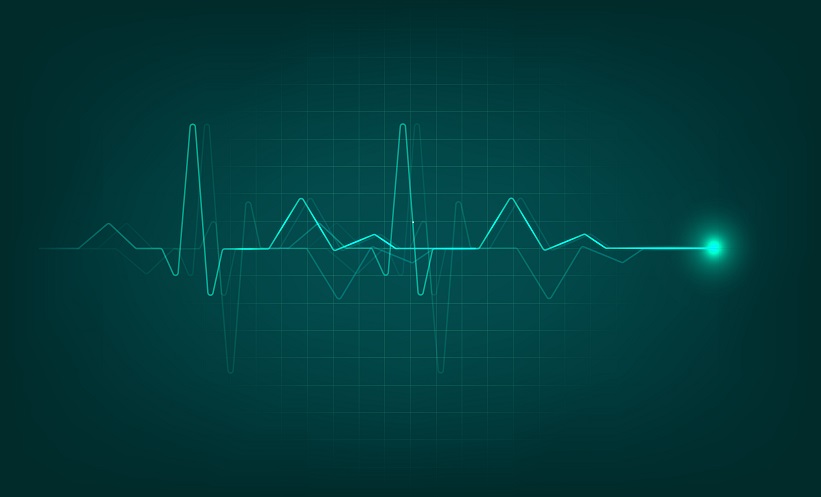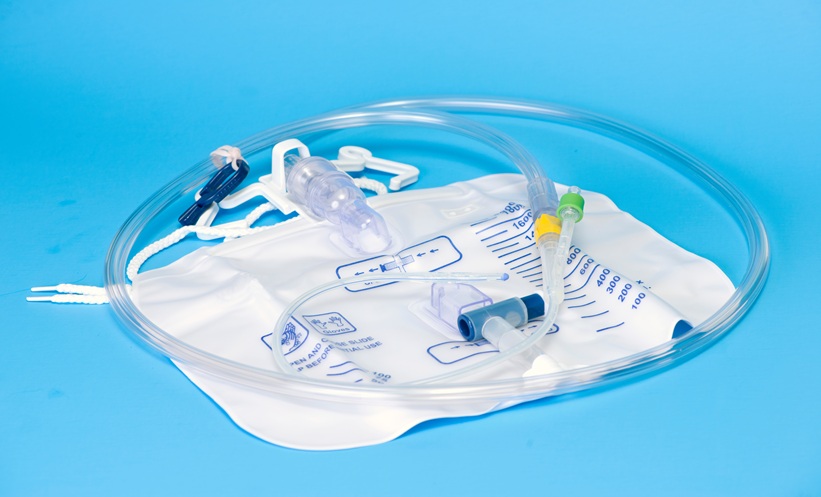THE 37th Annual Meeting of the European Association of Urology (EAU) took place in Amsterdam, the Netherlands, and online between the 1st–4th July 2022. The opening ceremony began with a piano performance from the talented Wibi Soerjadi and a unique artistic display from a sand magician, who demonstrated his art by using sand alone. Christopher Chapple, EAU Secretary General, welcomed all the attendees to the first in-person Annual Congress since EAU19, which had taken place in Barcelona, Spain.
At this year’s congress, there were over 2,580 presentations from 900 speakers, 56 courses, and training courses provided by the European School of Urology (ESU). Furthermore, this year held the first in-person ‘Patient Day’, following the success of last year, which is a special programme organised by the recently formed EAU Patient Office. The 4-day scientific programme comprised of live surgery, state-of-the-art lectures, case discussions, and dynamic debates from experts in this field. The congress had over 8,200 attendees from 124 countries, both in-person and virtually.
Chapple presented awards for the new honorary members: John Denstedt, Western University, London, Canada; Rien Nijman, University Hospital Groningen, the Netherlands; and Manfred Wirth, Technical University Dresden, Germany. The EAU Willy Gregoir Medal, which is for a significant contribution to the development of the urological specialty in Europe, was awarded to Karl-Eric Andersson, Lund University, Sweden. The Frans Debruyne Life Time Achievement Award, for a longstanding and crucial contribution to the activities and development of the EAU, was awarded to Joan Palou, University of Barcelona, Spain. The Crystal Matula Award, which is given to a young promising European urologist, was awarded to Veeru Kasivisvanathan, University College London (UCL) Hospitals NHS Foundation Trust, London, UK. For the best European paper published on minimally invasive surgery in urology, Alberto Martini, University Vita-Salute San Raffaele Scientific Institute (UniSR), Milan, Italy, received the Hans Marberger Award. For inventions and clinical contributions that have had a major influence in the treatment and/or diagnosis of a urological disease, Yvet Fradet, Laval University, Quebec, Canada, received the EAU Innovators in Urology Award. Alain Jardin, Paris, France, on behalf of Cercle Félix Guyon, was awarded the Ernest Desnos Prize, for exceptional contributions to the history of urology. The Prostate Cancer Research Award was awarded to Tobias Nordström, Karolinska Institutet, Stockholm, Sweden.
“It is the 50th year of the EAU […] it has been around for half a century,” stated Chapple. Philip Van Kerrebroeck, Chairman of the EAU history office, walked the attendees through the history of the EAU. “This is the beginning of a great party […]it will be a party that will take one year.” Founded in 1972–1973, the EAU began the 50th anniversary celebration in Amsterdam, the Netherlands, where it was founded, and will conclude in Milan, Italy, at the EAU23 Congress. Firstly, Van Kerrebroeck acknowledged all of the previous secretary generals, and paid tribute to them. He further covered the ways in which the field of urology has evolved over the past 50 years, and highlighted the most important developments that took place over that period of time, and their links to European history.
Frans Debruyne, a former Secretary General, was praised for his work in the EAU for encouraging the organisers of Congress to enhance the event so that it was not only available for Europeans, but also international urologists. The EAU has reaped the fruits of his hard work as now the congress is an international event, with participants from over 124 countries, and joint sessions with urological associations worldwide including the USA, Asia, and Africa. In appreciation of Debruyne, both Chapple and Van Kerrebroeck unveiled a bust of Debruyne, which was an acknowledgment of the role he played in society at large. In his acceptance speech, he encouraged the attendees to “continue to work and let the EAU grow, not only in quantity but also, similar to what we have done the past 50 years, in quality.” Debruyne praised the EAU for its tremendous efforts in improving the quality of the field of urology in Europe and also globally.
To conclude, Chapple took the opportunity to thank all the members of the EAU who planned the scientific programme, the presenters who shared their expertise and latest research, and the attendees who were joined both in-person and virtually. An overview of groundbreaking EAU press releases can also be found within this issue of EMJ Urology, including how gut microbes may differ in males with prostate cancer, artificial intelligence in the field of urology, and much more. With this in mind, we look forward to joining the EAU at next year’s congress in Milan, Italy, where the society will conclude their 50-year anniversary celebrations. Read on for our key scientific insights from EAU’s 37th Annual Meeting.
Differences in the Gut Microbiome in Males with Prostate Cancer
SIGNIFICANT differences have been observed in the gut microbiota of males with prostate cancer compared with individuals who have benign biopsies. Although this finding is an association, it might partly explain the relationship between lifestyle effects and geographical variations in prostate cancer. The study was presented at this year’s EAU22, which took place between 1st–4th July in Amsterdam, the Netherlands.
Gut microbiota dysbiosis has been implicated in a range of conditions, including in organs that are far from the intestines; however, the connection between the gut microbiome and prostate cancer remains to be elucidated. For this reason, Peter Boström and collaborators from the University of Turku, Finland, collected samples from patients enrolled in a prospective multicentre clinical trial. The research team sequenced the gut microbiota from 181 males with suspected prostate cancer who where undergoing prostate cancer diagnostics. Samples were collected at the time of their biopsies after MRI scans.
In total, 60% of the males were diagnosed with prostate cancer. Their gut microbiota profiles were characterised by increased levels of members of the family Erysipelotrichaceae and Shigella, as well as lower levels of Jonquetella, Moryella, Anaeroglobus, and Corynebacterium.
Boström commented on the relevance of the results and highlighted directions for future research: “There are significant variations in prostate cancer rates around the world, which could be due to genetic factors or differences in healthcare policies, but also variance in lifestyle and diet. The difference in gut microbiota between men with and without prostate cancer could underpin some of these variations. More research is needed to look at the potential for using gut microbiota for both diagnostic and preventive strategies.”
Lars Dyrskjøt Andersen, Professor of Molecular Medicine at Aarhus University, Denmark, and member of the EAU22 Scientific Congress Committee of Urology, also emphasised that this was a notable finding from a large and well-conducted study. Although no cause-and-effect measures could be determined based on this, Andersen pointed out that the gut microbiota was an important area to investigate in order to further understand prostate cancer risk.
New Study Supports Prostate Cancer Screening Programme
NEW evidence supports the introduction of a targeted risk-based screening programme for prostate cancer. The study, classified as the world’s largest prostate cancer screening study, was presented at the annual EAU22 Congress, which took place on 1st–4th July, and found that those who undergo screening see their disease progress slower following diagnosis, spending more time in the earlier stages with no signs of disease progression.
The researchers, from the Erasmus MC Cancer Institute, University Medical Centre, Rotterdam, the Netherlands, examined data from over 43,000 males in the Dutch cohort from the 2009 European Randomised Study of Screening for Prostate Cancer (ERSPC), to determine the length of time it took for the disease to progress from one stage to the next after diagnosis. The stages were defined as biochemical recurrence, when the cancer had returned following treatment with radiotherapy or surgery, and the metastatic disease stage, when the cancer had spread to other organs of the body.
This novel analysis showed that when the disease had been found through a screening programme, the patients remained a year longer without their cancer progressing on to the next stage, compared to men in whom the cancer had been detected through normal clinical practice. However, the data showed that, once the cancer entered the metastatic disease phase, the length of time men spent in that stage were similar for both groups.
The results further support the need for a risk-based screening programme to help reduce prostate cancer mortality rates. Hendrik Van Poppel, Adjunct Secretary General of the EAU, stated: “The systematic and personalised approach to screening advocated by the EAU will significantly reduce the likelihood of over-diagnosing or over-treating cancers that pose minimal threat. But, most importantly, it will preserve the best possible quality of life for prostate cancer patients, and it will save lives.”
Machine Learning Beneficial for Urology Patients
AN ARTIFICIAL intelligence (AI) algorithm has been trained to identify abnormal urine flows. It is hoped that this deep-learning tool could be used to effectively monitor urology patients at home.
In information presented at EAU22, Amsterdam, the Netherlands, studies found that the Audioflow deep-learning tool was almost as effective as specialist machines currently used in clinics. Researchers also discovered that similar results are achieved in assessing the flow of urine, compared with urology residents, achieving a rate of agreement of 84%. The study was based on the detection of sound created by urine when in a soundproof environment.
Currently, patients with symptoms have to urinate into a funnel during their outpatient hospital visits; this funnel is connected to a uroflowmeter, which records information about the patient’s flow. As access to hospital care has been limited during the COVID-19 pandemic, and patients have been unable to access usual services in some cases, this test can be time-consuming to wait for in healthcare settings due to demand.
The algorithm, created by colleagues at the Singapore General Hospital, Singapore, was tested with a cohort of 534 male participants between December 2017 and July 2019. All participants were asked to use a uroflowmetry machine positioned in a soundproof room, and also to record their urination on a smartphone. With 220 recordings, the AI was able to learn to estimate flow rate, volume, and time taken. However, it does not yet have the ability to differentiate between the different urinary flows of males and females, as the study was carried out using male participants only.
The overall aim of the study was to create an app for patients, who will then have the ability to monitor themselves at home. Audioflow will be rolled out via primary care physicians, so that it can be tested in real-world settings. This is a promising step forward for many patients with lower urinary tract symptoms which are related to both the urethra and bladder.
Lee Han Jie, Singapore General Hospital, who led the study, commented: “Our AI can outperform some non-experts and comes close to senior consultants […] But the real benefit is having the equivalent of a consultant in the bathroom with you, every time you go.”
As an estimated 60% of males and 57% of females are affected by lower urinary tract symptoms, the introduction of AI in healthcare settings has the ability to ameliorate treatment for many urology patients.
Applications of Artifical Intelligence Datasets for Prostate Cancer Diagnosis and Prognosis
THE LARGEST dataset of prostate cancer biopsies has been created by researchers in Sweden, who, at the EAU22 from the 1st–4th July 2022, called for increased co-ordination and focus on large scale clinical trials using artificial intelligence (AI) to enhance diagnosis, prognostication, and treatment selection. The database, containing over 95,000 images, has been created to allow the training of AI systems in diagnosis and grading of prostate cancer to aid the shortage of both generalist and specialist uropathologists.
“Grading prostate cancer is a key step in deciding on appropriate treatment, but it’s a fairly subjective process and differences between pathologists’ assessments can sometimes be large,” stated Kimmo Kartsalo, Postdoctoral Researcher at the Karolinska Institutet (KI), Stockholm, Sweden, presenting at the EAU2022.
A collaboration of researchers from the KI; Radbound University Medical Centre (UMC), Nijmegen, the Netherlands; University of Turku, Finland; and Google Health, Menlo Park, California, USA, identified that due to the wide-ranging variety in the methodology different clinics use to prepare slides from diverse patient populations, many of the available algorithms did not have the capacity for universal application. The novel algorithm was created and trained on over 10,000 biopsy images, with top performing algorithms outperforming general pathologists and on average matching the specificity of specialist uropathologists.
Biopsies from a clinical trial in Sweden that lasted over 4 years were used to prepare the data set of 95,000 images. The extended dataset was intended to ensure that the algorithm can account for the additional complexity that is found in clinical settings such as rare disease and benign situations that mimic cancer.
“AI holds great promise and can benefit patients everywhere but in order to achieve this promise, we need an international effort to collect datasets that are representative of the variation in technical approaches and between patients. The combination of our vast database and our colleagues’ algorithms is beginning to show how we can really work together to make a big difference for clinicians and patients,” stated Nita Mulliqi from the KI.
Mulliqi further identified four areas that are key to ensuring improving grading and prognosis of prostate cancer using AI. These include, scanner calibration, improved algorithms, upscaling datasets, and modelling for morphological heterogeneity. The researchers emphasised the value that AI could provide in the future, stating that so far AI has only been used to replicate grading carried out by uropathologists; however, in the future it has the potential to identify elements in images and predict clinical outcomes directly.
New Study Demonstrates that MRI Is Still the Gold-Standard for Prostate Cancer Imaging
IN NOVEL findings presented at EAU22 in Amsterdam, the Netherlands, researchers highlighted how MRI scans can be used to detect prostate cancer with a significantly higher degree of accuracy than the newer, prostate specific membrane antigen (PSMA) PET/CT scanning technique. This technique uses a radioactive dye to identify prostate cancer cells through identifying PSMA, which is found on the cell surface and can be used to measure both progression and recurrence of disease.
The PEDAL trial recruited participants identified as at risk of prostate cancer and administered both an MRI scan and a PSMA PET/CT scan, with the images that suggested cancer being followed up by a biopsy. In a total of 240 patients recruited, MRI scans identified abnormalities in 141 whereas PSMA PET/CT identified abnormalities in 198. Following this analysis 181 patients underwent a prostate biopsy with 82 subsequently found to have clinically significant prostate cancer.
Analysis demonstrated that the MRI scans were significantly more accurate at detecting prostate cancer of any grade compared with PSMA PET scans (0.75% versus 0.62%). However, when looking at only clinically significant prostate cancers, there was no significant different in accuracy.
“This study confirms that the existing ‘gold standard’ of pre-biopsy detection, the MRI, is indeed a high benchmark. Even with fine-tuning, we suspect PSMA PET/CT won’t replace the MRI as the main method of prostate cancer detection. But it will likely have application in the future as an adjunct to the MRI, or for people for whom an MRI is unsuitable, or as a single combined ‘diagnostic and staging’ scan for appropriately selected patients,” explained Head Researcher Lih-Ming Wong, St Vincent’s Hospital, Melbourne, Australia.
The researchers highlighted the importance of further research exploring PSMA PET/CT use in understanding cancer aggressiveness and avoiding unnecessary biopsy and treatment in the future.
Increased Overall Survival Following Bladder Surgery Removal
PATIENTS who are positive for circulating tumour DNA (ctDNA) show a significant improvement after taken the immunotherapy drug atezolizumab, according to data presented at EAU22.
Comprising of DNA fragments and tumours that are shed and found in the bloodstream, ctDNA has emerged as a minimally invasive, potentially promising biomarker in clinical oncology. However, it is not used as standard detection as is involves tumour-specific sequencing for individual patients, which is costly and time-consuming.
The IMvigor010 trial investigated whether atezolizumab improved survival prospects when given to patients following bladder removal surgery for up to 1 year. Comparing individuals who had atezolizumab for 1 year with those who were placed in an observational group and received no further treatment, the researchers discovered that there no significant difference in overall survival.
Part of the trial, however, was to investigate the patients’ ctDNA, which was measured after surgery and during treatment or observation. The researchers discovered that a subgroup of patients who were ctDNA-positive showed marked improvement after taking atezolizumab, having a significantly highly disease-free and overall survival than the observation group. Furthermore, patients who were ctDNA-positive and had become ctDNA-negative after treatment with atezolizumab had a particularly good prognosis.
While well known that patients who are ctDN-positive have a poor prognosis compared with those who are ctDNA-negative, this study shows, for the first time, that immunotherapy can change the course of the disease depending on ctDNA status. Morgan Rouprêt, Chairman of the European Section of Onco-Urology of the EAU (ESOU), believes that personalised medicine is “just around the corner,” stating that ctDNA analysis is “relatively easy to do with new technology and it means we can select a subset of patients who are likely to respond.”
Due to these results, this trial has been redesigned into the IMvigor011 study. This new trial will further evaluate ctDNA sampling in 500 patients who are ctDNA-positive, comparing atezolizumab against placebo after bladder removal surgery.








